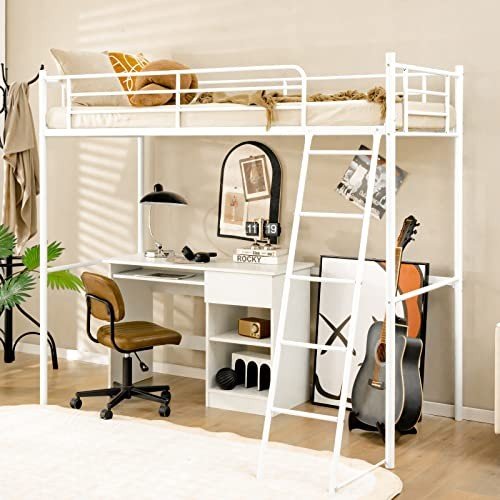Exploring Bunk Beds: A Comprehensive Guide
Bunk beds have actually long been a staple in kids's bedrooms, dorm rooms, and even homes with minimal space. Not only do they supply a practical sleeping option, however they also develop an enjoyable and imaginative environment for kids and a great space-saver for adults and families. This article will check out whatever you require to understand about bunk beds, from types and products to security pointers and purchasing suggestions.
Tabulation
- Types of Bunk Beds
- Traditional Bunk Beds
- Loft Beds
- Triple Bunk Beds
- L-Shaped Bunk Beds
- Material Options
- Wood
- Metal
- Security Considerations
- Purchasing Guide
- FAQs
Kinds Of Bunk Beds
Bunk beds come in different styles to suit various requirements and preferences. Here's a breakdown of the most typical types:
Conventional Bunk Beds
Conventional bunks generally include two beds stacked vertically on top of one another. These beds are perfect for brother or sisters sharing a room or for making the most of sleeping space in guest rooms.
Loft Beds
Loft beds stand likewise to standard bunk beds but do not have a lower sleeping area. Instead, they often integrate a desk or seating area below, making them a great option for small spaces requiring multifunctionality.
Triple Bunk Beds
Triple bunk beds are designed for three occupants, with beds stacked in a three-tier setup. These are less typical however can be an enjoyable service for big households or sleepovers.
L-Shaped Bunk Beds
With one bed positioned horizontally and the other vertically, L-shaped bunk beds are often equipped with additional functions such as desks or storage drawers and can complement corner areas in a room.
Contrast of Bunk Bed Types
| Bed Type | Suitable Use | Description |
|---|---|---|
| Traditional | Shared bed rooms or visitor spaces | 2 beds stacked vertically |
| Loft | Little spaces needing multi-purpose space | Upper bed with open space beneath |
| Triple | Big families or sleepovers | 3 beds stacked vertically |
| L-Shaped | Corner or versatile areas | A combination of vertical and horizontal beds |
Product Options
Bunk beds are manufactured from numerous products, with wood and metal being the most typical. Each material has its pros and cons.
Wood
- Sturdiness: Generally robust and can endure years of use.
- Aesthetic Appeal: Offers a traditional appearance that can blend with different decors.
- Weight Capacity: Typically stronger; can support much heavier weights.
- Drawbacks: May be more costly than metal options and can be susceptible to scratches.
Metal
- Durability: Generally light-weight and simple to move but still tough.
- Modern Design: Often comes in streamlined designs, making it appealing for contemporary areas.
- Cost-Effective: Usually less costly than wooden options.
- Drawbacks: Can be cold to the touch in winters and may not have the exact same visual appeal for some buyers.
Safety Considerations
When it comes to bunk beds, safety can not be ignored. Here are essential security suggestions to remember:
- Guardrails: Ensure that the top bunk has guardrails on both sides to avoid falls.
- Sturdy Construction: Check for a solid construct and sturdy materials to stand up to weight and movement.
- Weight Limit: Adhere to the maker's weight limitation for both the upper and lower bunks.
- Ladder Design: Choose bunks with a safe, easy-to-climb ladder and avoid any sharp edges or rungs.
- Age Restrictions: Most manufacturers suggest that kids under the age of 6 should not sleep in the upper bunk.
Purchasing Guide
When searching for bunk beds, consider the following elements to discover the very best fit for your requirements:
- Space Availability: Measure the space size and ceiling height, ensuring there is adequate space for the leading bunk.
- Bed Size: Decide in between twin, complete, or bigger sizes based upon your requirements and the size of the space.
- Design Preference: Consider the overall design of the bed room to discover an ideal design.
- Reduce of Setup: Look for a bunk bed that is uncomplicated to assemble.
- Spending plan: Bunk beds can be found in numerous cost ranges, so determine a budget plan before beginning your search.
FAQs
1. What is click to read suggested age for children to sleep on the leading bunk?
Kids aged 6 and older are generally suggested to sleep on the top bunk to reduce the threat of falls.
2. How can I make my bunk bed much safer?
To boost safety, make sure guardrails are properly set up and examine that the bed is put on a flat surface. In addition, motivate kids to utilize the ladder carefully.
3. Can I convert a bunk bed into 2 separate beds?
Many bunk beds are developed to be convertible. Check the maker's specs for convertibility functions.
4. What accessories are offered for bunk beds?
Common accessories include beddings, storage drawers, staircases instead of ladders, and tented canopies for a fun visual appeal.
5. How do I preserve my bunk bed?
Regular look for loose screws or structural integrity can assist guarantee safety. Dust the bed frequently and clean spills promptly to keep the materials in good condition.
Bunk beds are flexible and a space-efficient solution for different living scenarios, from kids's rooms to visitor accommodations. With many styles and materials offered, prospective purchasers have a wealth of choices to consider, guaranteeing a combination of usefulness and looks. By focusing on security and following the pointers detailed in this guide, people can discover the right bunk bed that fits their space and way of life, all while producing an enjoyable sleeping environment.

